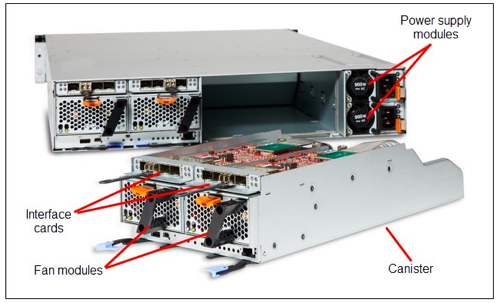This article is more than 1 year old
IBM dive-bombs into all-flash array pool
It's a belly-flop, snark startup swimmers
NetApp
For NetApp, John Rollason, director for product, solutions and alliances marketing in EMEA provided this thought:
"NetApp has shipped 60PB of Flash (both hybrid and all-flash arrays) including over 500 shipments of our all flash array EF series. Our EF-Series (EF540 and EF550) has a resilient architecture that’s proven to deliver consistent, sustainable, low-latency performance. EF550 supports up to 87TB usable, significantly more than IBM FlashSystem 840 (48TB).
"Enterprise RAS is fundamental to the EF-Series’ design with features such as: no single point of failure, automated path failover, hot swappable components, extensive diagnostics with auto support and proactive wear life tracking of each SSD, proactive repair, online administration and non-disruptive upgrades. In just 2U, the EF-Series is a fully-redundant, enterprise-class All-Flash Array. Nothing else is needed to meet the demands of business-critical tier one and tier zero applications.
"We would assume the challenges SVC presents to the customer includes performance bottle necks, higher latency and affects to the overall TCO. By offering snapshots, clones, thin-provisioning and replication as part of the SANtricity OS, NetApp enables storage administrators to achieve maximum performance and utilization of their EF-Series all-flash array.
"Architected to provide the highest levels of reliability, availability and serviceability, SANtricity features include a fully-redundant I/O path with automated failover, advanced monitoring and diagnostic features, and non-disruptive serviceability. And SANtricity already offers plugins and provides for tight integration with VMware, Oracle and Microsoft applications.
"The effect of IBM’s entry into the market will not be seen until real world testing and customer implementation takes place."
IBM made two points about the NetApp view:
- "The claim that "NetApp supports larger capacity configurations than IBM ... is not correct. The IBM FlashSystem Enterprise Performance Solution can scale to support far more than 87TB configurations."
- It added: "The view that "IBM’s effect on the market will not be seen until real world testing and customer implementations take place" is inappropriate. IBM and Texas Memory Systems have been providing solid state storage solutions for more than 30 years, and have ample customer testimonials that speak to the success of the technologies and strategies."
Pure Storage
Scott Dietzen, Pure Storage’s CEO said:
- We welcome IBM's entry into the all-flash arena. It's further evidence that the future of Tier 1 storage is 100 per cent flash rather than hybrids, and that customers should stop wasting their money on mixes of flash and disk that perform like disk, cost the same as the all-flash alternatives (at least from Pure), and are much more expensive to operate (power, space, simplicity).
- We welcome competition with IBM and others. Competition drives innovation, market growth, and customer value.
- The challenge with the hardware-centric all-flash solutions (the JBOFs, for "just a bunch of flash") is that they wholly lack the Tier 1 native data management services:
- no snaps,
- no clones,
- no replication,
- no deduplication,
- no compression,
- no non-disruptive upgrade for software, hardware swap, & expansion.
- Only by closing this software gap within the array did Pure become a better alternative to existing Tier 1 disk-centric storage, and it takes years to hone that software.

FlashSystem 840 rear view
IBM says the Pure Storage assertion that "IBM lacks storage services ... is not correct. The FlashSystem Enterprise Performance Solution offers a broader feature set than Pure Storage and has more than a decade of experience than Pure Storage in delivering these features."
Solidfire
Solidfire CEO Dave Wright said: “The FlashSystem 840 appears to be a continuation of the TMS focus on solving point performance problems with low latency flash and a limited feature set that doesn't even include basic data management features like thin provisioning and snapshots.
“The use of SVC to add data management features that are not optimised for a flash architecture doesn't really change that picture. To deliver any significant number of IOPS, a large number of SVC "engines" are required.
“For example, IBM's recent 500k IOPS SPC result used 8 SVC engines at a discounted price of $367,000 for the engines and SVC software license. A similar configuration when used in front of a 48TB FlashSystem 840 would add over $7.50/GB to the basic cost of the FlashSystem itself, not to mention over a dozen rack units and thousands of watts of power.
“The combination of the added SVC cost and inefficiency, the use of more expensive eMLC (instead of cMLC), and the lack of deduplication in any form, completely prices the solution out of a large scale general-use case like public or private cloud.”
“There are undoubtedly use cases where the combination of very low latency and a limited feature set can be successful, but that is a very narrow segment of the storage market.”
Dave Wright points us to this SPC reference (PDF).
IBM rebuts two of Wright's assertions. The claim that "SVC is not optimised for Flash ... is not correct. IBM tuned and optimised SVC for Flash.
Also "SolidFire implies that IBM’s lack of deduplication, in any form, prices it out of the market ... That is not correct. IBM FlashSystem Enterprise Performance Solution includes Real-Time Compression which is proven to be more effective for active data environments. IBM also has a complete product line, ProtecTIER, which offers a full-suite of deduplication features."
